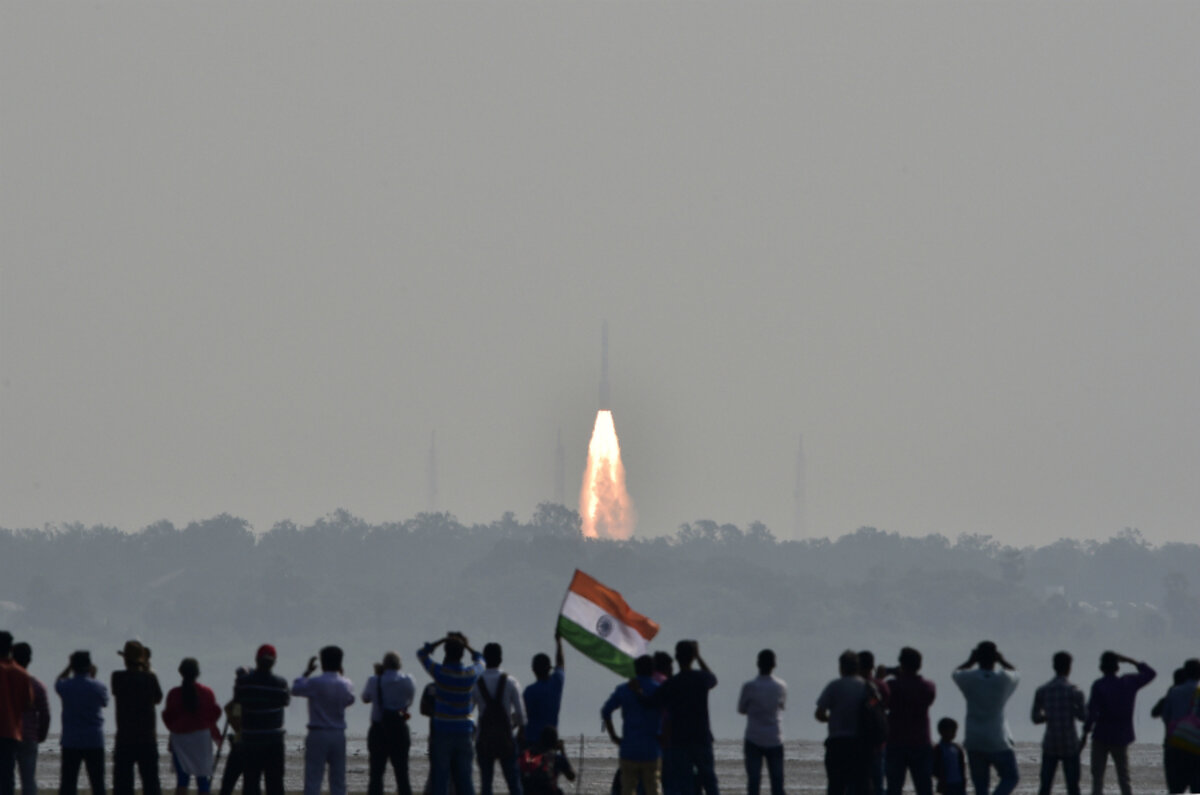For the record: India launches 104 satellites all at once
Loading...
Two years after India became the first Asian nation to send a probe to Mars, the country’s space agency can claim another record: The most satellites launched with a single rocket.
, a Polar Satellite Launch Vehicle (PSLV) built by the Indian Space Research Organization (ISRO) lifted off from the Satish Dhawan Space Centre on the Bay of Bengal, carrying 104 satellites from seven countries. By 10 a.m., all had successfully been inserted into orbit, and India had surpassed a bar of 37 satellites in 2014.
“This remarkable feat by is yet another proud moment for our space scientific community and the nation,” the country’s prime minister, Narendra Modi, . “India salutes our scientists.”
In recent years, India has gained a reputation for reliable, inexpensive satellite launches; Tuesday’s launch positions it to gain an even bigger share of this fast-growing market.
“India offers launch costs that are fifty percent cheaper than the rest of the world,” Pallava Bagla, a science editor with the privately run Indian TV channel NDTV, , so if SpaceX, or NASA can do it at $100, India is willing to do it at $50.”
If anything, that may be an understatement. On Wednesday, reported that launching a satellite through SpaceX could cost around $60 million, but “ISRO charged an average of [$3 million] per satellite between 2013 and 2015.”
ISRO’s strong position in the satellite-launch market had an inauspicious start. The first PSLV, launched in 1993, failed because of software glitches.
By persevering with the program, ISRO was able to take advantage of the country’s talented, but relatively low-wage, workforce to bring launch costs down.
Ramabhadran Aravamudan, former director of the ISRO Satellite Center in Bangalore, attributed India’s low launch prices to “cheaper labor costs and a state-led model that doesn't involve ‘industries with their own profit margins,’ ” .
This approach runs counter to the United State's current strategy of turning orbital spaceflight over to private firms as a means to bring costs down.
But ISRO has nonetheless found plenty of customers, and managed to capitalize on another recent trend: the development of lightweight, inexpensive that can be packed into a single rocket.
Tuesday’s launch – 88 of which belonged to the San Francisco-based imaging company Planet – into orbit, along with a larger environmental satellite. Last year, private launches like these (about $34 million) for ISRO’s commercial arm.
The experience has also enabled ISRO to set more ambitious goals, on a tight budget. The country’s Mangalyaan Mars Orbiter reached the Red Planet in 2014 at a cost of $75 million –
“They're not at the level of the Big 4,” Jonathan McDowell, an astronomer at the Harvard-Smithsonian Center for Astrophysics, told ���Ǵ��� last May, referring to the space programs of the US, Russia, China, and Europe. ”But they’re pretty darn good.”
[Editor's note:��A previous version of this article misstated the US dollar value of 230 rupees crore. It is $34 million.]





